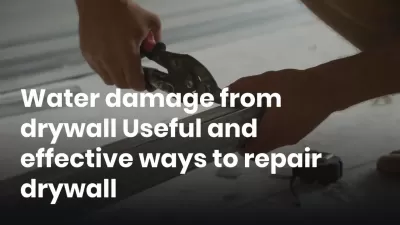Water damage from drywall Useful and effective ways to repair drywall
We must admit that we are spending a lot of money to make the inside of our house beautiful. In fact, installing a drywall alone can cost you hundreds of dollars, not to mention the fact that you get it finished and textured, which will eventually make you spend more money. This is why water damage on drywall can be a very serious problem.
If your drywall is damaged by water, chances are it's due to pipe leakage or flooding. It can also be caused by leaks on your roof, where rainwater enters your home and eventually reaches the gypsum.
The good news is that it is easy to repair the damage of drywall. So how are you doing?
The first thing to do is to determine the origin of the leak. You must remember that when repairing a water-damaged drywall, you must first solve the problem that caused it. In this case, you must look for the source of the leak that caused the water damage to your drywall.
Keep in mind that nothing is more frustrating than repairing the drywall only for the leak to come back and damaging your newly installed drywall.
Now that you have corrected the leak, the next step is to drill a hole in the drywall to allow airflow. This can be done with a powerful fan and it is also strongly recommended to use a dehumidifier to reduce the moisture content of the air in the room where the water-damaged drywall is located.
It is very important that you closely monitor the drying process to ensure that the drying process is complete. By not completing the drying process properly, you will eventually grow mold on the wall within 24 to 48 hours. If this happens, call a mold restoration professional to help remove the mold. It is essential that you do not touch the mold, as this will only quickly spread the mold in your home.
Now, once everything is already dry, you can now replace the gypsum and all the posts damaged by the water. You may need to get a plywood backing if you drill a large hole to secure the drywall you mount to cover the hole.
Attach the support panel to the water-resistant gypsum board and place the joint compound over the joints. Allow to dry and then sand the joint compound for a smooth finish.
After that, you can now glue the joint with the drywall tape where the drywall meets the existing wall. Once the edges are smooth, it's time to paint the area to match the color to the rest of the wall.
Here is basically how to repair a drywall damaged by water. By following these tips, you can repair water-damaged drywall in your home and do it with a professional-looking finish.
